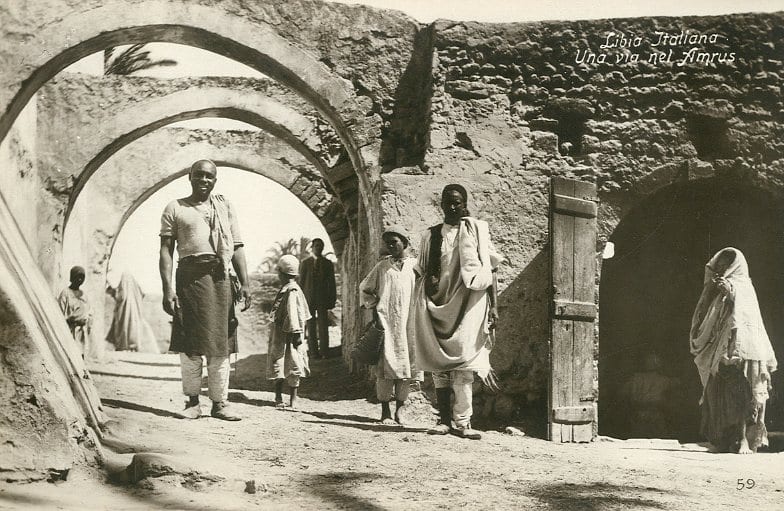A ruthless steadfast warrior, as well as a merciful leader who liberated thousands of slaves – this was Dihya al Kahina, a Jewish Berber Northern African woman. The Jewish Khaleesi, if you will, but unfortunately, not nearly as famous as that the Game of Thrones fictional character.
Dihya al Kahina lived in Northern Africa at the end of the 7th century. In Muslim sources she is described as “dark skinned with lots of hair and huge eyes”. Fascinated by her exotic image, historian Nahum Slouschz described her as “fair as a horse, strong as a wrestler, a true desert woman, healthy and fast on her feet, an excellent rider and a shooter who never misses”, and studied her character throughout Northern Africa. Slouschz asserted that Dihya meant “Jewess” and that “al Kahina” referred to the family of Kohanim (priests).
Born to a Jewish-Moorish-Berber tribe from today’s Mauritania, Dihya headed the resistance to the Muslim invaders of the Ummaya dynasty, who conquered the Maghreb towards the west during the 7th and 8th centuries. Her adventures are dated 687-697, when Hassan ben Naaman, military commander of the Khalif Abd Al Malech, was heading towards Carthage in order to occupy it. He had 45,000 soldiers under his command and was prepared to almost every scenario – except that of an army of Berber tribes headed by a woman battling against him.
Dihya offered peace but the Muslim commander would not accept, unless she acknowledged the authority of the Kahllif and adopted Islam, an ultimatum she rejected scornfully. According to Slouschz, she was descendent of a priestly family deported from Judea by Pharaoh Necho in the days of King Yoshiahu. She did not intend to enter the family history as a leader who caused yet another deportation of the dynasty, and certainly did not intend to convert to Islam. “I shall die in the religion I was born to”, she shortly answered the commander’s demands, and went on forging her steel sword.
Berber tribes from all over the Maghreb arrived to join al Kahina in her campaign, which they gloriously won after exhausting battles. Defeated and ashamed Hassan had to escape with what was left of his troops to Tripoli, where he had to face the Khalif and tell him of his defeat. Al Kahina chased Hassan’s troops all the way to Carthage, and then became the city’s ruler.

Owing to her “Officer and Gentlelady” ethics, she set free all the war prisoners she had captured, except for one: Haled ben Yazid, whom she adopted as her son, on top of her two other sons, one Berber and the other Greek. Apparently, Dihya was no innocent lass. Slouschz wrote she had three husbands forced to satisfy her intense needs, and that she was “addicted to the lusts of the flesh with all her youthful flaming temper”.
It took Hassan five years to recover from the losses caused in the battle with Dihya. In the second round, al Kahina got the lower hand, as Hassan had this time a much larger force. He managed to conquer Carthage and to defeat the Berber rebels. According to Eli Eshed, editor of “יקום תרבות” magazine, in addition to all her virtues, al Kahina also had the gift of foreseeing the future, therefore she knew she was going to be defeated and advised her sons to cross the lines and join the Muslims. She herself would not surrender, and used a scorched-earth policy, ordering her warriors to leave no crops, possessions, or livestock, wherever they retreated.
After her defeat, al Kahina took her own life by falling into a deep well. The Muslims pulled her body, severed the head and sent it to the Khalif. The well is called up until today “The Kahina Well”.
Naturally, not all researchers share Slouschz’s firm conclusions about Dihya al Kahina. Prof. Shlomo Sand, for example, claims that Dihya’s origin was not from the priests from Judea, but rather from a converted Berber tribe, which Sand refers to in his study “The Invention of the Jewish People” as nothing less than the genetic origin of the entire Northern African Jewry. Other studies doubt the historical authenticity of the character of the Jewish queen and commander, and claim she is merely a folk tale.
Whether history of tale, the stories of the bravery of Dihya al Kahina encouraged many peoples to claim part of the myth for themselves. The Muslims said that after her defeat she converted and used her as a classic Muslim role model. The Berbers considered her their own local hero, and even the French compared her to their national hero, Joan of Arc, who fought the English and similarly to Dihya was eventually conquered by her enemies.
The character of Dihya also inspired the members of the Jewish resistance in Algiers, under José Aboulker, whose mother, Berthe Bénichou-Aboulker, wrote a play about the Jewish heroine. Other literal works were composed after Kahina, for example Pierre Benoit’s “Atlantida”, about a queen heading a Berber lost tribe and turns her lovers into living statues. Dihya is also mentioned in an episode of the t.v. show “Xena: Warrior Princess”. It is disappointing that in Israel her story is hardly ever mentioned, with one exception: author Limor Sharir dedicated a few chapters in her book “Secrets of Marrekesh” to Dihya. But mostly she remained unknown. Will someone take the challenge we offer here, and turn her story into the literal or cinematic saga she deserves? We sure hope so.